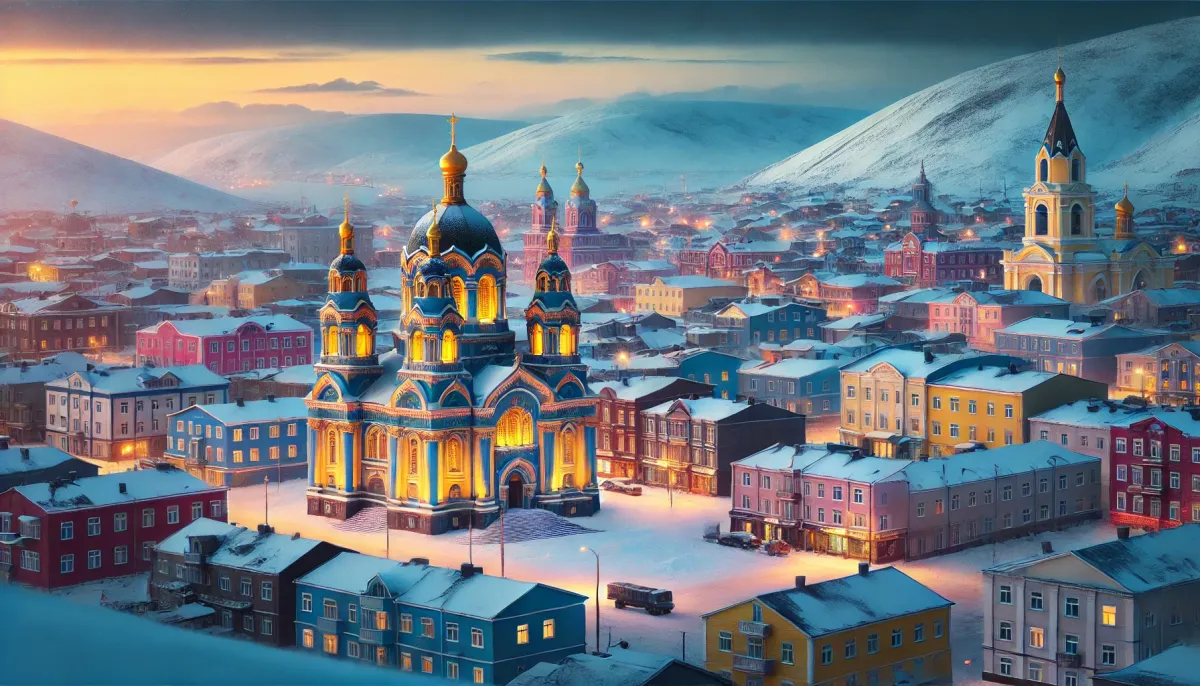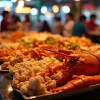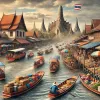Chukotka. It’s not as famous as the North or South Pole, but it’s a place of extreme beauty and harsh realities. Located in Russia's Far East, Chukotka is bisected by the 180th meridian, making it the easternmost point of the Eastern Hemisphere. I recently had the opportunity to explore this fascinating region, from the vibrant city of Anadyr to the remote outpost of Pevek, and even the Diomede Islands, where Russia and the US are just a stone's throw apart. Join me as I recount my adventures in this land of ice and snow, where survival is a daily challenge and the beauty of nature is both breathtaking and unforgiving. This journey is not for the faint of heart, but for those seeking adventure and a glimpse into a world unlike any other, Chukotka beckons.
Anadyr: A Burst of Color in a Frozen Landscape
My first stop was Anadyr, the administrative center of Chukotka and its largest city. I was immediately struck by the vibrant colors of the buildings. This isn't just for aesthetics; it's a deliberate strategy to combat the long, dark winters. With limited sunlight and a landscape often dominated by white snow and gray skies, the colorful buildings bring a much-needed sense of cheer and vibrancy. It’s truly a unique sight in the Arctic Circle.
One of the city's most impressive landmarks is the Holy Trinity Cathedral, the world's largest wooden Orthodox church built on permafrost. Its sheer size and intricate design are awe-inspiring, and the fact that it can accommodate up to 1,000 worshippers is remarkable. The copper roof and titanium oxide domes shimmer in the limited sunlight, creating a beacon of light and hope in this remote corner of the world.
Getting to Anadyr Airport is an adventure in itself. Separated from the city by a channel of the Bering Sea, reaching the airport involves a ferry in the summer, a bus across the frozen channel in the winter, and, during the shoulder seasons, a pricey helicopter ride. Talk about logistical challenges!
Pevek: A City of Contrasts
Next, I ventured north to Pevek, Russia's northernmost city. Located at the foot of the Pikini Mountains, Pevek faces the vast Arctic Ocean. This city, rich in mineral resources like tin, gold, and coal, has a history intertwined with the Cold War, evident in the remnants of radar stations. The city's population, once as high as 13,000, dwindled to around 4,000 in 2019 due to the high costs of resource extraction and the collapse of the Soviet Union.
Pevek’s landscape is one of contrasts. The city is primarily covered in snow, with roads painstakingly cleared, revealing the harsh realities of life in the Arctic. The port, a vital lifeline for the city, is navigable for only about 70 days a year, relying on icebreakers like the Yamal for the remainder of the year.
However, there is a sign of renewal in Pevek. The arrival of the Akademik Lomonosov, the world's first floating nuclear power plant, in 2019 has brought new hope to the city. This innovative solution provides much-needed power, heat, and desalinated water, but it has also sparked controversy due to environmental concerns.
Diomede Islands: Where Today Meets Tomorrow
Finally, I made my way to the Diomede Islands, a symbolic point where Russia and the United States are separated by just 3.8 kilometers of the Bering Strait. Big Diomede, belonging to Russia, and Little Diomede, part of Alaska, are divided by the International Date Line. This means standing on Little Diomede, you’re looking at tomorrow on Big Diomede, and vice versa. It’s a mind-bending concept!
While a winter crossing between the islands on foot might theoretically be possible when the strait freezes over, there are no border crossings, and braving the Arctic cold makes it a less-than-ideal idea. Besides, Big Diomede is currently uninhabited except for a weather station.
Chukotka: A Land of Extremes and Untamed Beauty
Chukotka is undoubtedly a land of extremes. Its harsh climate, limited infrastructure, and challenging logistics make it a difficult place to live. Yet, it's this very isolation that has preserved its pristine natural beauty and unique polar charm. From the vibrant colors of Anadyr to the stark realities of Pevek, and the symbolic divide of the Diomede Islands, Chukotka offers a glimpse into a world few have the opportunity to experience. It's a reminder of the power of nature, the resilience of the human spirit, and the beauty that can be found in even the most remote corners of our planet. If you’re an adventurous soul seeking a truly unique travel experience, I highly recommend adding Chukotka to your list. Just be prepared for a journey unlike any other.
Chukotka at a Glance
| Feature | Description |
|---|---|
| Location | Russia's Far East, bisected by the 180th meridian |
| Climate | Arctic and subarctic, long winters, short summers |
| Major Cities | Anadyr, Pevek, Bilibino |
| Population | Approximately 50,000 |
| Key Attractions | Holy Trinity Cathedral, Diomede Islands, Arctic wildlife |
| Challenges | Harsh climate, limited infrastructure, logistical difficulties |







